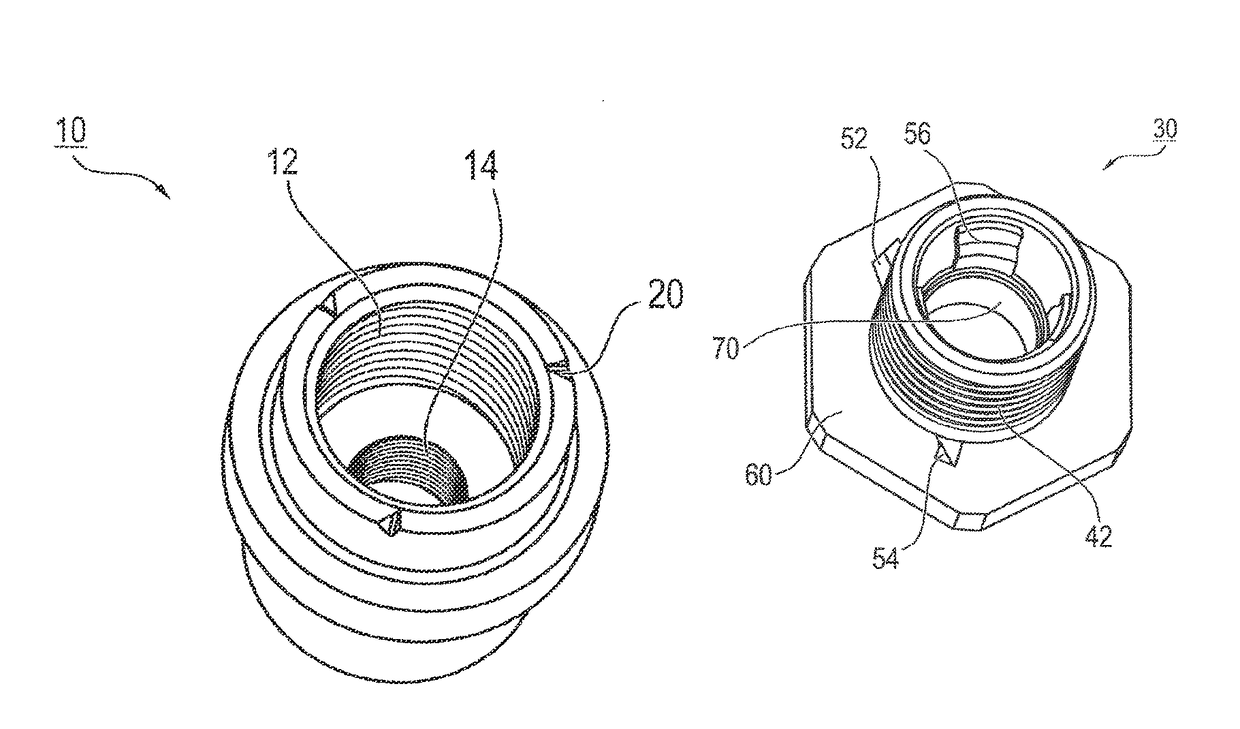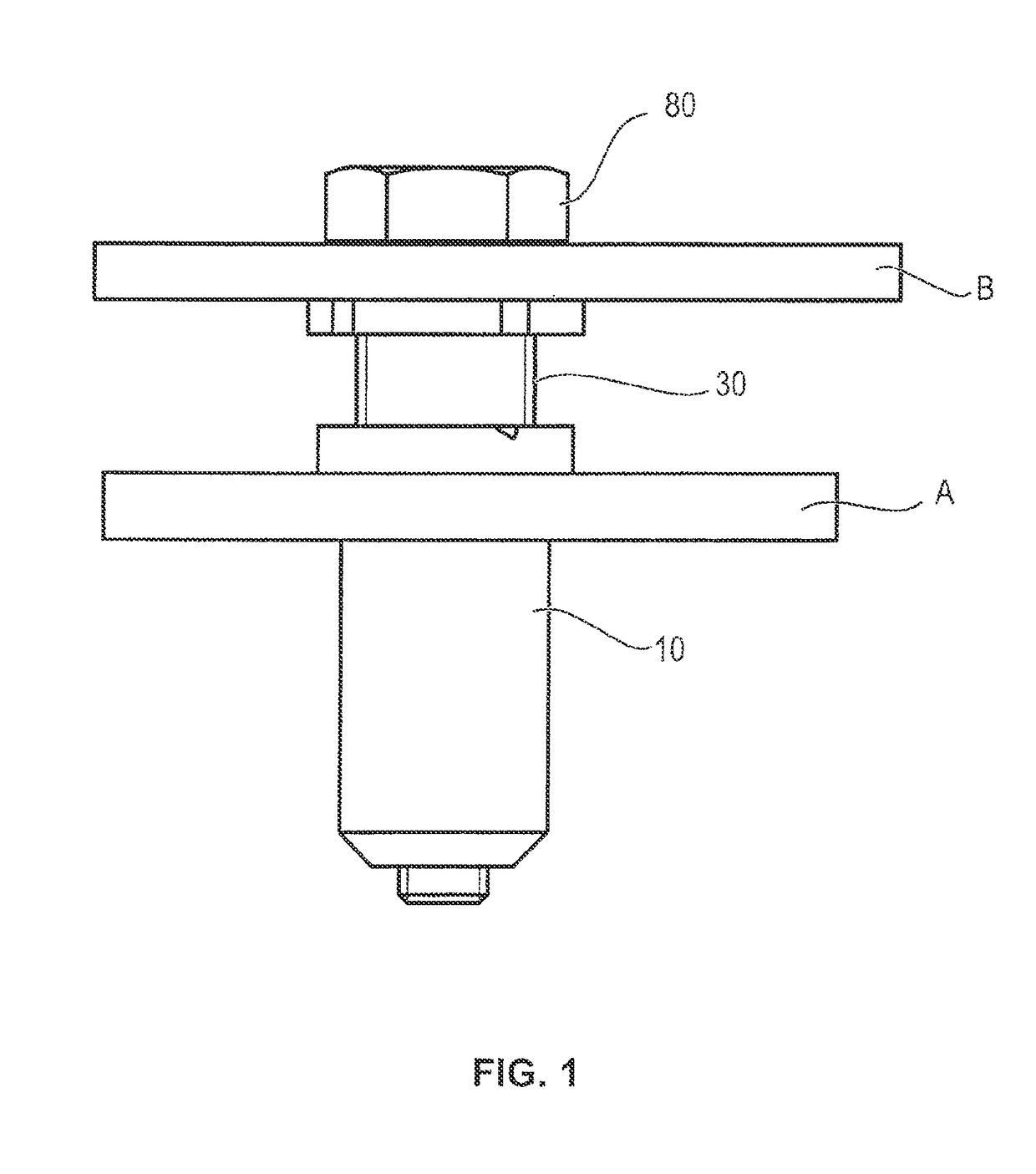Fastening arrangement with tolerance compensation, and method for pre-assembly and assembly
a technology of tolerance compensation and fastening arrangement, which is applied in the direction of washers, screws, load-modified fasteners, etc., can solve the problems of affecting the stability, integrity and usability releasing the adjusting element from the basic element only with high effort or not at all, and achieving the effect of effective installation of the fastening arrangemen
- Summary
- Abstract
- Description
- Claims
- Application Information
AI Technical Summary
Benefits of technology
Problems solved by technology
Method used
Image
Examples
Embodiment Construction
[0035]FIG. 1 shows a preferred embodiment of the fastening arrangement according to the invention for fastening a component B at a component A with automatic tolerance compensation between the components A and B. The fastening arrangement comprises therefore a basic element 10 which is fixed in an opening of the component A. An adjusting element 30 is connected to the basic element 10 via a screw connection. According to the rotational direction of the adjusting element 30, the common axial length of the basic element 10 and the adjusting element 30 varies, whereby tolerances between the two adjacent components A, B are compensable.
[0036]In the assembled state of the fastening arrangement, the adjusting element 30 supports itself at the second component B. The components A and B as well as the fastening arrangement 10, 30 are connected to each other via a mounting screw or fastening screw 80. Therefore, the fastening screw 80 is screwed into a threaded portion 14 in the basic elemen...
PUM
| Property | Measurement | Unit |
|---|---|---|
| angle | aaaaa | aaaaa |
| angle | aaaaa | aaaaa |
| angle | aaaaa | aaaaa |
Abstract
Description
Claims
Application Information
 Login to View More
Login to View More - R&D
- Intellectual Property
- Life Sciences
- Materials
- Tech Scout
- Unparalleled Data Quality
- Higher Quality Content
- 60% Fewer Hallucinations
Browse by: Latest US Patents, China's latest patents, Technical Efficacy Thesaurus, Application Domain, Technology Topic, Popular Technical Reports.
© 2025 PatSnap. All rights reserved.Legal|Privacy policy|Modern Slavery Act Transparency Statement|Sitemap|About US| Contact US: help@patsnap.com



